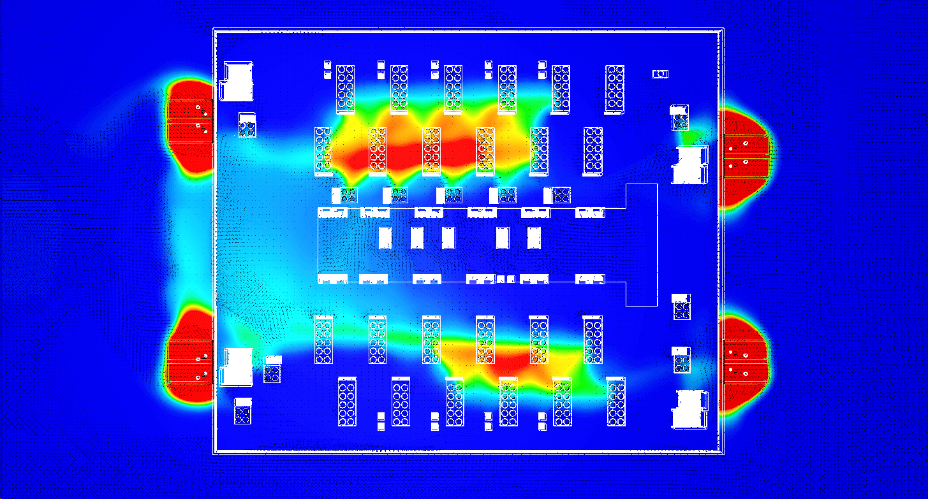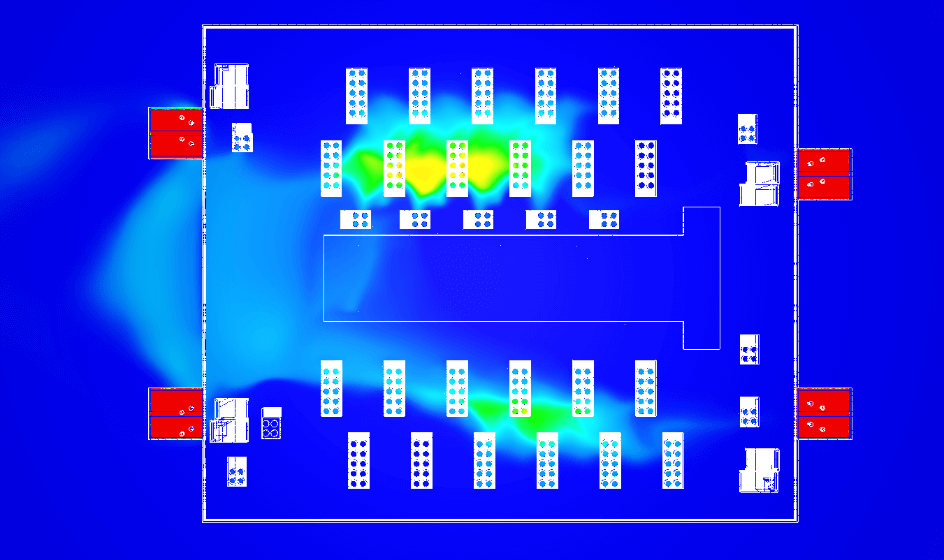Data center – DC14 – External
In a few words
EOLIOS Ingénierie provided an overview of the thermo-aeraulic conditions of the thermal plume of a data center and the generator sets of adjacent data centers.
Data center - D14 - External
Year
2022
Customer
NC
Location
Milan
Typology
Data Center - External
Continue browsing :
Our other projects :
Latest news:
Description of the project
The objective of this study is toexamine the exhaust plume from a series of generators in relation to rooftop systems for a data center. The goal is to determine if exhaust from the systems can contaminate the supply air of the various equipment and their impact on adjacent buildings. This involves simulating by CFD numerical calculation the thermo-aeraulic behavior of the various phenomena that take place outside the model.
When modeling CFD the shape of the vertical wind speed profile is extremely important. It depends mainly on the degree of surface roughness, ie the slowing effect of buildings, trees and other obstacles that oppose the flow of wind at the surface. Thus over the entire thickness of the atmospheric boundary layer, the wind speed increases as one moves away from the ground. In our study, to take into account wind shear we use a methodology similar to a physical wind tunnel by considering the urban environment for a periphery of 300m around the study site and applying a site-dependent velocity profile.
Digital twin of the site
Simulation of external thermo-aeraulic phenomena
The CFD simulation allowed us to observe that, in this study, the thermal plumes have a distant influence outside their emission zone , but that overall, in the direct vicinity of the releases, there is no major looping phenomenon that could cause a system shutdown. The supply air is correctly sucked in by the lower parts to be evacuated at altitude. These conclusions were a valuable aid for the design teams , in order to verify that the layout of the cooling systems did not create a recirculation zone.
CFD thermo aeraulic study of a data center
Simulations can contribute to a better understanding of the problem in order to develop relevant technical solutions . Models can be simulated in their entirety and allow simultaneous analysis of the impact of many phenomena . The realization of this study made it possible to highlight that the very high density of installation leads to some hot zones on the roof. The most disadvantaged systems in the center are likely to take air back beyond the ranges of their operating range .
Thanks to the conclusions of the study carried out by our engineers , we were unable to offer the design teams appropriate solutions to resolve these issues. Having recourse to a CFD simulation, makes it possible to analyze, verify and correct any errors that may occur in your design. This fast and accurate method saves design time and costs. Moreover, it guarantees concrete and reliable results. Integrating CFD into the design phase means calling on experts to ensure that no problems occur in the future.



